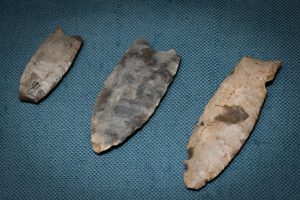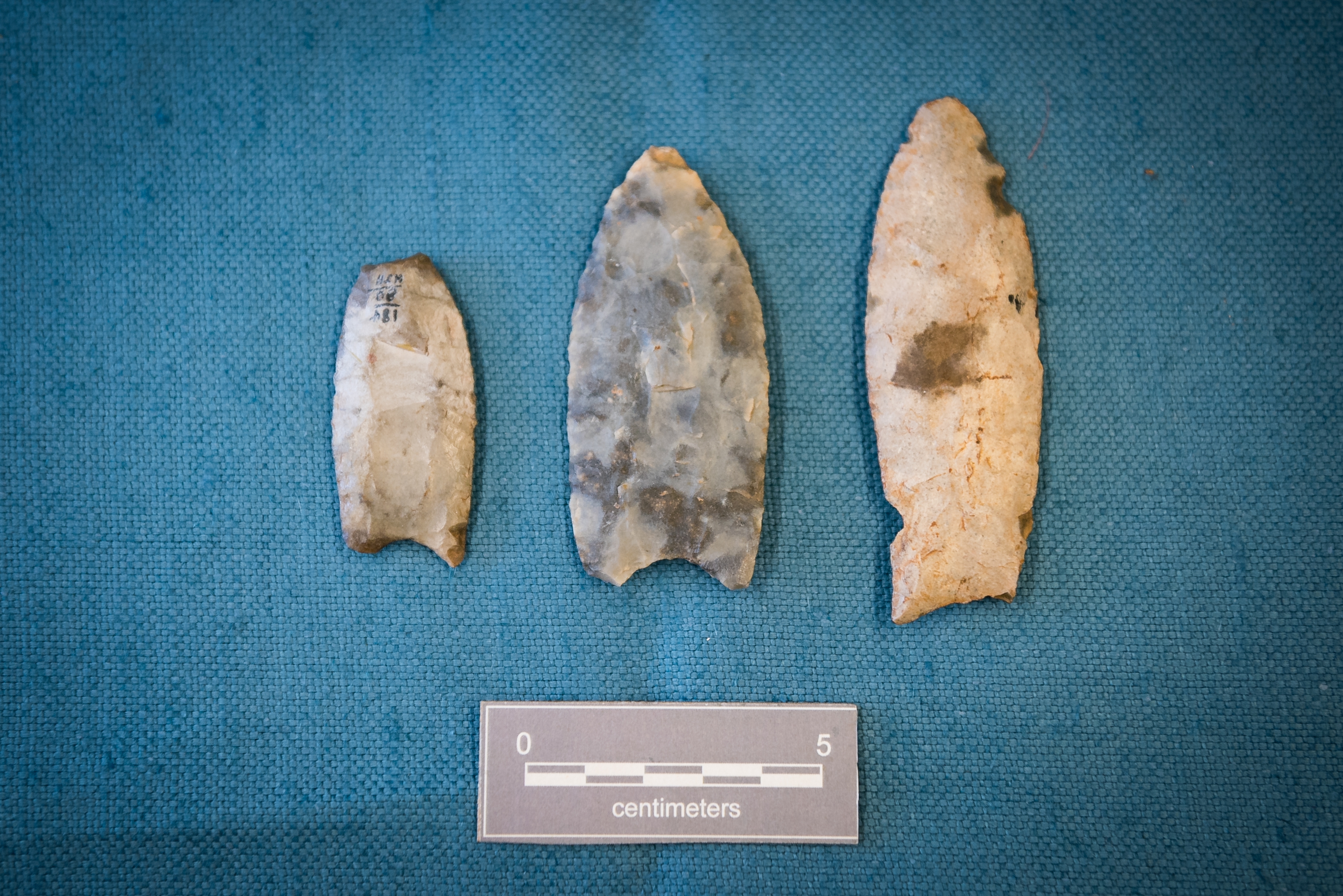
Visitors to the Archaeology Collections of the University Museums often ask, “What is the oldest thing here?” The Clovis projectile points shown here, which date to between 10,000 and 12,000 years ago, provide the answer.
Clovis points have been found across North America and northern South America. Typical examples are medium to large lanceolate points, with convex sides broadest near the midsection or toward the base. The base of the point is concave, and the characteristic long, shallow grooves, or flutes, appear on one or (more commonly) both sides of the point. The flutes likely made it easier to fasten the points to wooden spears, atlatl dart shafts and handles.
Edgar B. Howard, an archaeologist working with the University of Pennsylvania Museum of Archaeology and Anthropology, identified the Clovis point in 1935, during investigations of a gravel pit along a stream near the town of Clovis, New Mexico. He found them in close association with the bones of Pleistocene animals, such as mammoths, bison and camels, the first evidence that Paleoindians lived alongside the Ice Age megafauna.
The Archaeological Collection holds over 1 million artifacts, associated documents and photographic images documenting the history of human occupation in the southeastern United States and beyond. Artifacts from Moundville Archaeological Park, the site of one of the largest prehistoric Native American settlements in North America, form a major part of the collection. The collection is housed at the Erskine Ramsay Archaeological Repository, and supports collection–based research both at home and abroad by students, academics and professionals.
WIlliam R. Allen, archaeology collections manager for The University of Alabama Museums, provided the above information.
